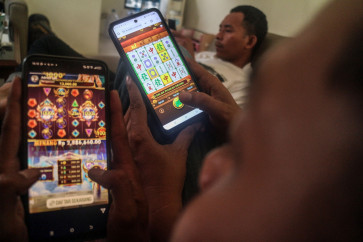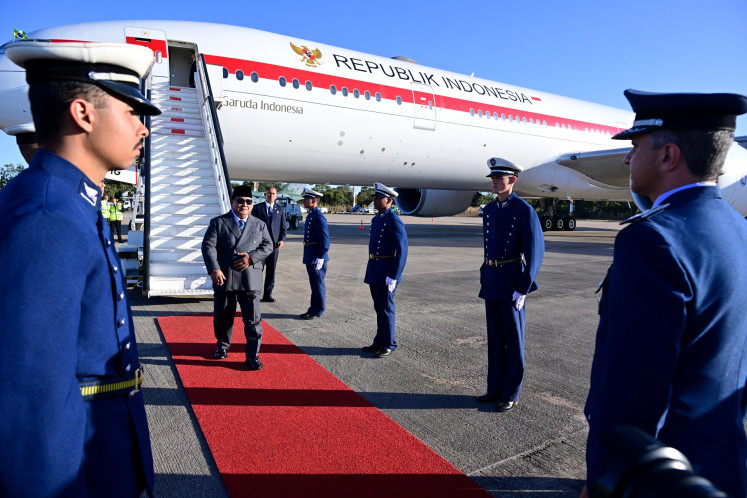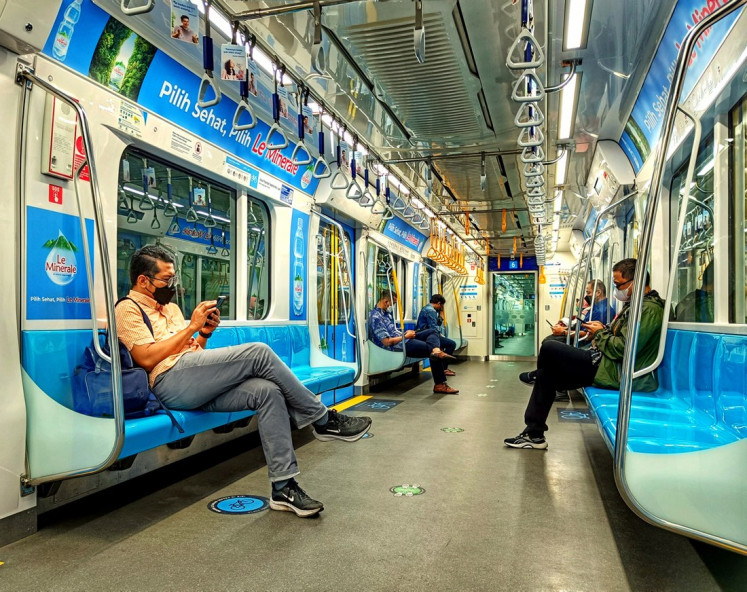Popular Reads
Top Results
Can't find what you're looking for?
View all search resultsPopular Reads
Top Results
Can't find what you're looking for?
View all search resultsZooming along in Kuala Lumpur
Visitors to the Malaysian capital will be wowed by a monorail system that provides an example as to what could be done to solve â or at least mitigate â the horrendous traffic in Jakarta
Change text size
Gift Premium Articles
to Anyone
Visitors to the Malaysian capital will be wowed by a monorail system that provides an example as to what could be done to solve ' or at least mitigate ' the horrendous traffic in Jakarta.
While Kuala Lumpur launched the project in 1997, plans were halted later that year as the Asian financial crisis began to take its toll.
The KL Monorail took over construction from Hitachi in July 1998 and launched the system on Aug. 31, 2003, bringing the project on-line with a budget of 1.18 billion ringgit (US$365 million). Fielding 12 trains, the system runs over 8.6 kilometers linking the city's main transit terminal, KL Sentral, with 11 other stations inside Kuala Lumpur's 'Golden Triangle'.
The RapidKL Monorail system is integrated with the city's bus and light rail transit (LRT) public transportation systems, which allows for transfers without having to purchase additional tickets.
One-way tickets cost from 1 ringgit to 5 ringgit, while system pass holders pay 150 ringgit for a refillable card, which is also good for use on the bus and the LRT.
Around 72,000 people use the monorail in Kuala Lumpur every day. During peak commuting hours, the system ' with each train carrying upwards of 430 passengers ' goes a long way to relieving traffic congestion in the Malaysian capital.
It took about five years to build the RapidKL Monorail system, in contrast to the monorail currently under construction in Jakarta, where work began in 2003 and is slated for completion sometime in 2015. Development of the 29-km system has been plagued by on-again/off-again work with support columns left to rot for years after the last work stoppage.
The government of Indonesia ' and the Jakarta administration, in particular ' would do well to reflect on what's been done by our neighbors in Malaysia, who have been working intently to develop public transportation alternatives to beat gridlock.
Oh, the places you'll go: A man and woman ponder how to reach their next destination at the Bukit Bintang monorail station.
Enjoying the ride: Around 72,000 people use the monorail in Kuala Lumpur every day, with each train carrying upward of 430 passengers.
Ticket to ride: Tokens valid for single rides on the light rail transit (LRT) and monorail lines can be purchased from ticket vending machines at all LRT and monorail stations.
On the move: Passengers exit Bukit Bintang station. Officials plan to revamp all 12 stations and add new trains as the system reaches capacity, according to local reports.
Alighting: A KL Monorail train stops at Bukit Bintang station, one of 12 that serve the system.
Away we go: A monorail speeds along above Jl. Sultan Ismail in Kuala Lumpur.
People mover: Passengers zoom above the streets of Kuala Lumpur's 'Golden Traingle'. The monorail will be closed from April 12 to 14 as officials add 12 new four-car trains.
JP/Wendra Ajistyatama

















